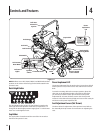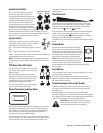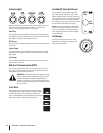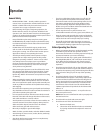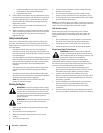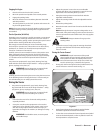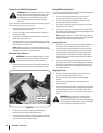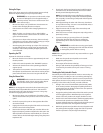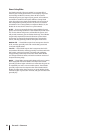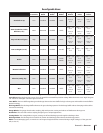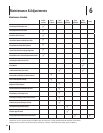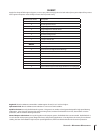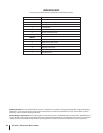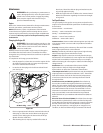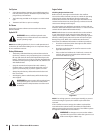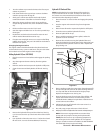
22 se c t i O n 5— Op e r a t i O n
Mower Cutting Blades
The blades normally “factory installed” on a mower afford
the best grass cutting performance on the majority of grasses
and mowing conditions; however, there will be occasions
whereby the grass type, stage of grass growth, soil conditions,
and weather conditions will require different cutting blade
orientation of one cutting blade to an adjacent blade (I.E., the
blades do not need to be “timed” nor synchronized).
Hi-lift — These are generally the best cutting blades for most
grasses and mowing conditions. These blades will provide extra
“lift” for the thinner leaf grasses, will handle lush grasses, and
will provide maximum grass and debris discharge. These blades
are generally required for material collection systems. More
horsepower is required for these blades when compared to
others, and they generally produce the highest noise levels.
Medium-lift — These blades require less horsepower than the
hi-lift, and they generally work well in wider leaf grasses and
some mulch applications.
Low-lift — These blades require less horsepower than hi-lift
and medium-lift blades, and they generally work best with wide
leaf grasses, sparse grass growth, and sandy soil conditions.
are configured without offset, and with a maximum amount of
sharpened cutting edge.
Mulch — These blades are generally designed for use in cutting
decks equipped with mulch baffles. The shape of the blade
generally produces higher turbulence in order that the grass can
be repeatedly cut and re-cut into smaller pieces. These blades
generally require more horsepower than other blades. Mulch
blades work best when the grasses are cut at the highest levels,
minimal lengths of grasses are removed, and grass conditions are
generally dry.



